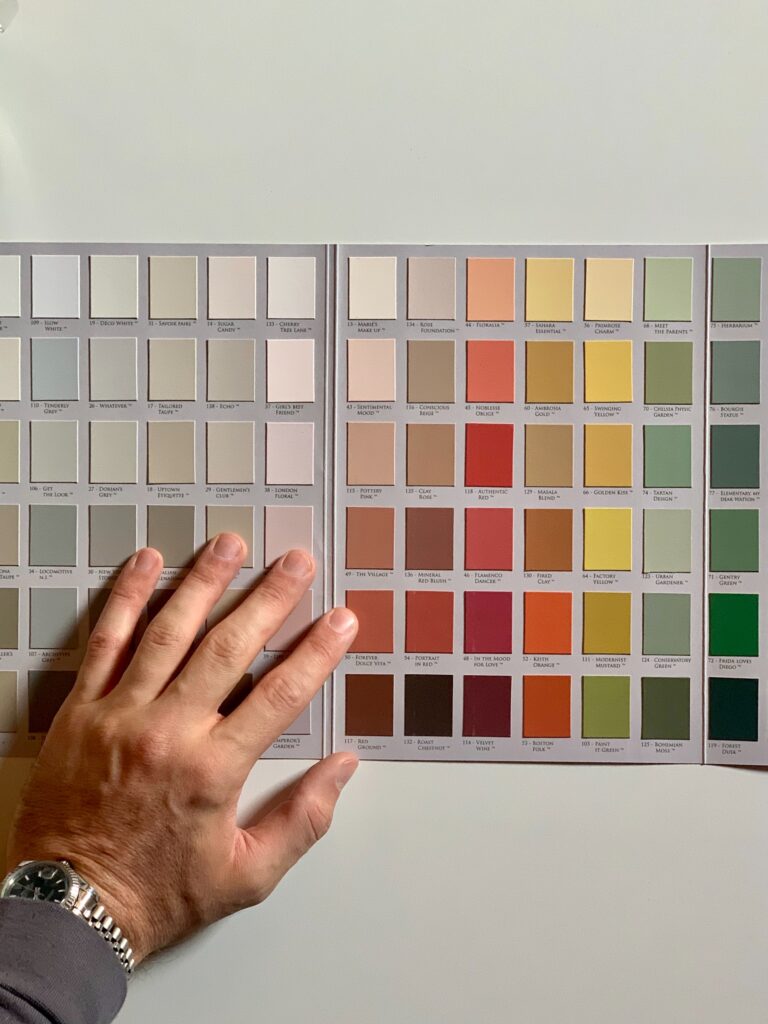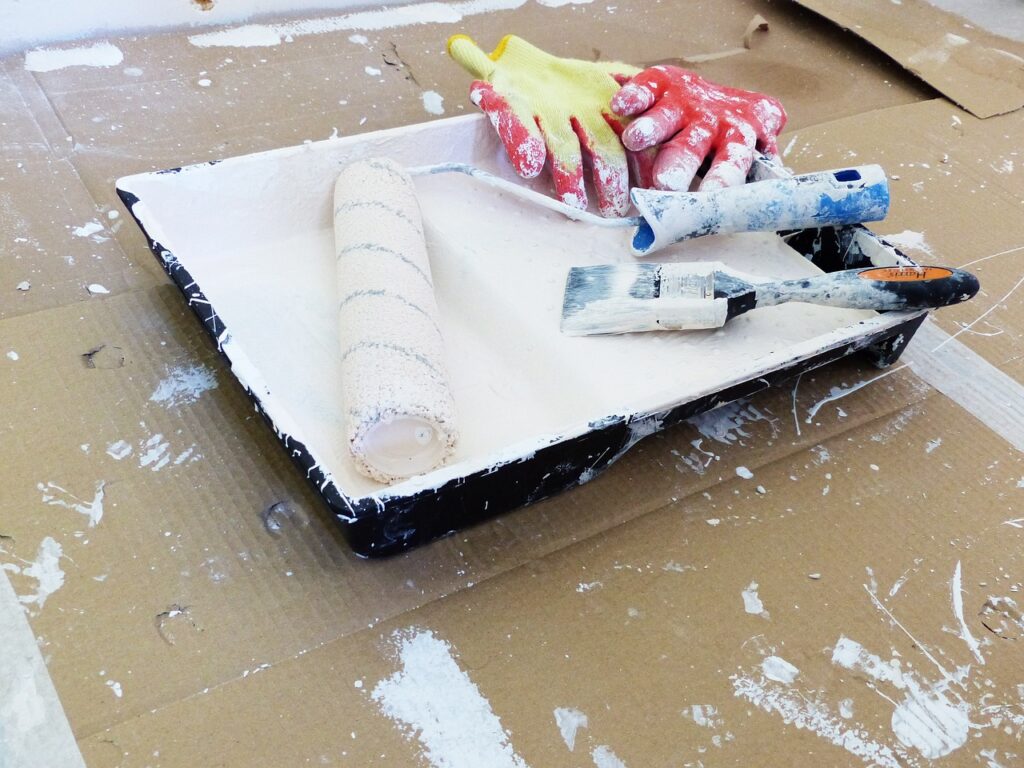Okay, so let’s get this straight, you can paint, I can paint, anyone can paint. What is painting after all? Isn’t it just about rolling the paint roller on a substrate? My bad, you may probably not know what substrate is if you are a newbie, it means “a surface to which paint is applied”. So, painting is just as easy as dipping your roller inside the paint bucket and applying generously to the surface.
Painting is easy, good painting is not.
Painting is easy, good painting is not. Have you been in a place where someone with a cracked voice and no music skills was asked to give a rendition? Whatever he does could be called singing but it can’t pass for good music or can it? The difference between bad music and noise is just very slim. That is how it is when all you know about painting is dipping the roller inside the paint bucket and rolling on the wall.

Just before you relax and think we are about teaching you how to be a good painter, my bad! But wait a minute! You could get a thing or two out of this that will help you do better when painting either as a professional painter or as someone who is trying hands-on painting.
Now, let’s dive straight into 8 Things Every New Painter Must Know.
1. Learn about the paint
All paints are paints but all paints are not the same! Yes, you heard that! There are different types of paints and different brands of paint. Permolit Paint comes in different types like the Substrate Protective Coating, Decorative Coating, Synthetic Paint and so on. You will need to know the safety information, the timing of application, the right temperature and the coverage of paint before using them.
Remember that it is not just about painting, you should also be able to calculate how many buckets of paint you should be needing for your surface and understanding the coverage of your paint is key to knowing how many buckets you would need. Understanding the paint makes it easier for you to use and saves you from trial and error.
Quick Tip: One bucket of Nanomax Interior covers three standard bedrooms.

2. Don’t underestimate the importance of skimming.
To get a very good and perfect finishing, you must ensure that your surface is very smooth especially when you are working on the wall surface. To get the best out of quality paints like the permolit paint brand, you must ensure that every crack, hole and bumps are patched and scrapped off. This is where skimming comes in handy. Most locals know this process as “screeding”. Skimming makes it possible to do away with wall flaws and make it properly levelled. It also helps give you the perfect smooth finishing that you or your client desire and helps your paint do what it promised to do.
Quick Tip: Permolit Acrylic Putty gives you a perfectly smooth surface for superb finishing.
3. Primer is not a waste of money.
Come to think of it. Why waste money on priming when I can just go ahead to paint my walls? That and more are people’s questions when you recommend a primer to them. Most new painters tend to overlook the importance of priming especially when writing their quotations.
Primer may not be ideal for every occasion but it has great benefits when you are painting surfaces that are very absorbent like new drywall, unpainted woods, repainting a wall with a different colour especially when switching from dark to light colour, painting over oil-based paints, repainting a wall with stains and so much more other scenarios.
Primer saves you money because it optimizes your surface and helps your paint stick to the surface instead of having to apply multiple coatings before achieving the desired result.
Quick Tip: Permolit Synthetic Primer can be used on any surface including wood, metal, plaster, putty, concrete, betopan, gypsum, gypsum board, chipboard and MDF before applying topcoat.

4. Don’t stop stirring
To get the best of your soup, you must stir it well before dishing it out so that everyone can have a taste of all the condiments used in making the soup. Hmmm, the yummy dish last night comes to mind but that’s a story for another day. Scratch that! Every paint product is a mix of ingredients that can separate from each other. And just like soup, to ensure that every part of your surface gets the taste of all the parts of your paint you must keep string before and during painting.
Quick Tip: Get a stirrer and keep it handy.
5. Paint from a separate bucket.
It is easy to just tear the bucket open, dip your roller or brush and start painting immediately. But come to think of it; sometimes, as a result of a constant encounter with the wall and back into the bucket, the brush may leave behind some specks of dirt and dust from the surface inside the paint bucket which could end up spoiling your leftover paint as a result of contamination.
Another reason is that leaving your main bucket of paint open can cause the paint to dry. Since you can’t carry your bucket of paint as you paint, you should get a smaller bucket that is handy, stir your paint, pour in a little and paint directly from the secondary bucket leaving your main bucket tightly closed.
Quick Tip: Most painters use old paint buckets as their secondary buckets. So, you may want to reserve some of your used buckets.

6. Choose your roller decisively.
All roller rolls but not all rollers are good for you especially very cheap ones! Depending on what you are painting, not all kinds of roller will serve the purpose. Paint rollers come in different sizes and there is a general guideline for choosing a roller:
- 1/4-inch nap for smooth or fine surfaces, such as new walls, ceilings, wood doors, and trim
- 3/8-inch nap for smooth to light-textured walls
- 1/2-inch nap for most walls and medium rough surfaces, such as textured plaster, and concrete
- 3/4-inch nap for rough surfaces, such as textured walls and ceilings, textured plaster, and concrete
- 3/8- or 1/2-inch nap is a good general-purpose roller cover.
7. Know when to use a brush or a roller
Fork and spoon are all used for eating but I bet you can’t scoop your tea or custard using a fork. That is how it is with a paint roller and paintbrush. Every painter must know when and where to use a paint roller or brush because you will need the right tool to get the right finishing.
- While a paint roller is ideal for large surfaces like the walls, ceilings and floors, the paintbrush is used to paint smaller and detailed areas like thresholds, edges and corners.
- While a paint roller holds much more paint and makes the distribution of paint faster, the paintbrush is small, holds a little paint and is ideal when you want to be in control of how much paint you use on an area.
- Paint rollers come in different designs which can be used for different kinds of finishings, a roller with a smooth surface will result in a smooth surface and a paintbrush can be used to achieve textured effects.

8. Trying a sample isn’t a bad idea
How would you feel seeing a nice-looking pizza, purchasing a very large one and getting home to realize that the taste is something you would never want to have again? Well, you wouldn’t have wasted money on a nice looking but bad tasting pizza if you were given a bite before making the decision.
While some colours would look nice on the screen and the colour chart, you never can tell how it will be when you use it on the desired surface. Before you make the major decision of purchasing a large quantity of paint, it is not a bad idea to try a sample first. You can spend a few naira on just one bucket to see if it is worth it.
At Permolit paint, we always encourage our customers to purchase a sample and try it out first. This isn’t just to prove how the colours will come out but also to prove our claims of quality and high coverage ability of our paints.
Quick Tip: You may want to try just one bucket of NanoMax Paint and see how far it could go in your three-bedroom apartment.

